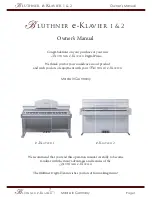
GUI Reference
R&S
®
ZNB/ZNBT
590
User Manual 1173.9163.02 ─ 38
Periodic
This type of jitter is determined by a sine wave whose amplitude ("Periodic Magni-
tude"), frequency ("Periodic Frequency") and phase ("Periodic Phase") is specified by
the user.
Remote command:
CALCulate<Chn>:EYE:JITTer:TYPE:PERiodic
CALCulate<Chn>:EYE:JITTer:PERiodic:MAGNitude
CALCulate<Chn>:EYE:JITTer:PERiodic:FREQuency
CALCulate<Chn>:EYE:JITTer:PERiodic:PHASe
Dirac
This type of jitter is specified by the amplitude in seconds ("Dirac Delta", positive or
negative), as well as the probability of the jitter occurring at each symbol period ("Dirac
Probability").
Remote command:
CALCulate<Chn>:EYE:JITTer:TYPE:DIRac
CALCulate<Chn>:EYE:JITTer:DIRac:DELTa
CALCulate<Chn>:EYE:JITTer:DIRac:PROBability
User Specific
The "Load Jitter" button allows the user to open a "Jitter File (*.txt)" with each entry in
the file equal to the jitter to be added at each symbol period.
Such a Jitter File must be a 7-bit ASCII compatible text file; the Byte Order Mark
(BOM) that is common with UTF encodings is not allowed. The file must consist of
floating point values (in parsable format), separated by any whitespace and/or line end-
ings.
Each value describes the jitter for a symbol transition (even when the current and the
previous symbol are the same). The jitter value is implicitely given in the unit [s] and
denotes the delta between the time of the ideally expected transition (given by the data
rate) and the actual one. Positive values describe a transition that is occurring after the
ideally expected transition. The values are limited to the range -1.0e-3 to +1.0e-3. Any
values outside this range are limited to this range.
After the values in the file have been exhausted, the jitter values are taken starting
from the beginning of the file.
Remote command:
CALCulate<Chn>:EYE:JITTer:TYPE:USER
MMEMory:LOAD:EYE:JITTer
Applic Softtool
















































